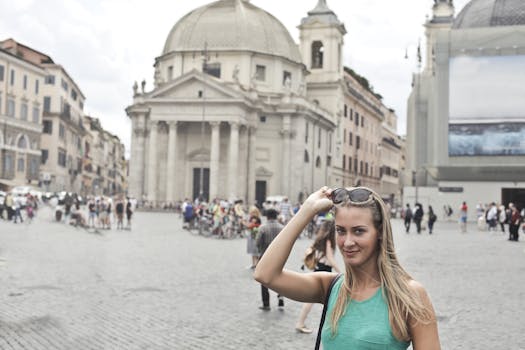
Traveling Through Time: How Europe’s Historical Heritage Shapes Modern Lifestyles in 2025 – WordPress
Traveling Through Time: How Europe’s Historical Heritage Shapes Modern Lifestyles in 2025 is an intriguing topic that has garnered significant attention in recent years. As we navigate the complexities of the 21st century, it’s essential to recognize the profound impact of Europe’s historical heritage on modern lifestyles. From the intricate architecture of ancient buildings to the vibrant cultural festivals, Europe’s rich history continues to shape the continent’s identity and influence the daily lives of its inhabitants.
Introduction to Europe’s Historical Heritage
Europe’s historical heritage is a treasure trove of diverse cultures, languages, and traditions. The continent is home to some of the world’s most iconic landmarks, such as the Eiffel Tower, the Colosseum, and Big Ben, which attract millions of tourists every year. These structures not only showcase Europe’s architectural prowess but also serve as a testament to the continent’s complex and often tumultuous past.
As we travel through time, we can witness the evolution of European societies, from the ancient civilizations of Greece and Rome to the modern nation-states of today. This journey through time reveals the significant contributions of European cultures to the development of art, literature, science, and philosophy.
The Impact of Historical Heritage on Modern Lifestyles
Europe’s historical heritage has a profound impact on modern lifestyles, from the way people live and work to the food they eat and the festivals they celebrate. The continent’s rich cultural diversity has given rise to a unique blend of traditional and modern practices, which are evident in the architecture, cuisine, and arts.
For instance, the historic city centers of Europe, such as Florence, Venice, and Amsterdam, are renowned for their picturesque canals, ornate bridges, and grand piazzas. These cities have managed to preserve their historical charm while embracing modernity, making them popular destinations for tourists and locals alike.
In addition to its cultural significance, Europe’s historical heritage also plays a crucial role in shaping the continent’s economy. The tourism industry, which is heavily reliant on historical landmarks and cultural events, generates significant revenue for European countries, creating jobs and stimulating local economies.
Preserving Historical Heritage for Future Generations
As we look to the future, it’s essential to recognize the importance of preserving Europe’s historical heritage for future generations. This can be achieved through a combination of conservation efforts, educational programs, and cultural events, which raise awareness about the significance of historical landmarks and cultural traditions.
Furthermore, the use of technology, such as virtual reality and augmented reality, can help to recreate historical environments and provide immersive experiences for visitors, making history more accessible and engaging for a wider audience.
In conclusion, Traveling Through Time: How Europe’s Historical Heritage Shapes Modern Lifestyles in 2025 is a fascinating topic that highlights the profound impact of the continent’s rich history on modern lifestyles. As we continue to navigate the complexities of the 21st century, it’s essential to recognize the significance of preserving Europe’s historical heritage for future generations, ensuring that the continent’s cultural diversity and traditions continue to thrive.



